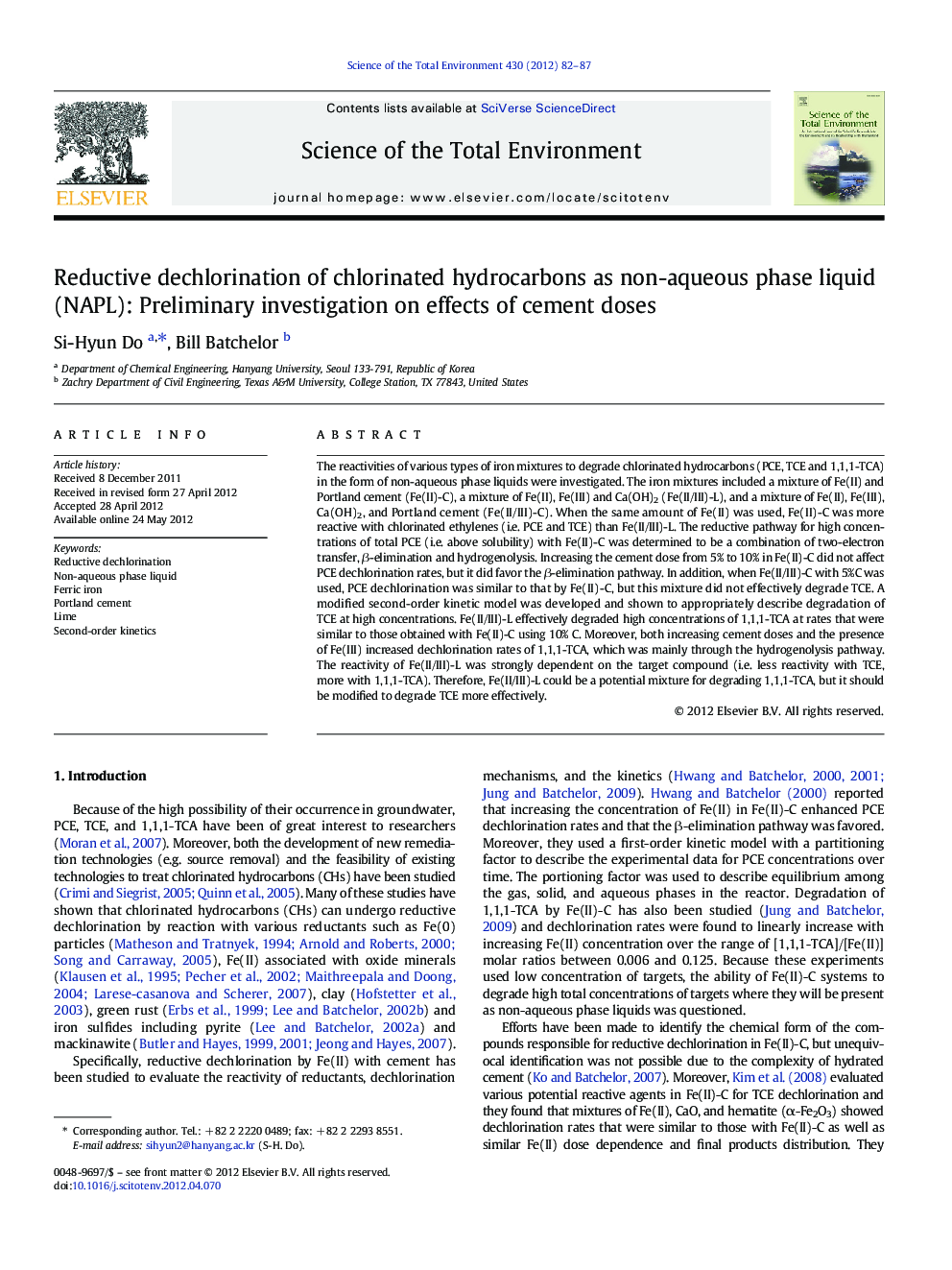| کد مقاله | کد نشریه | سال انتشار | مقاله انگلیسی | نسخه تمام متن |
|---|---|---|---|---|
| 4429356 | 1619822 | 2012 | 6 صفحه PDF | دانلود رایگان |

The reactivities of various types of iron mixtures to degrade chlorinated hydrocarbons (PCE, TCE and 1,1,1-TCA) in the form of non-aqueous phase liquids were investigated. The iron mixtures included a mixture of Fe(II) and Portland cement (Fe(II)-C), a mixture of Fe(II), Fe(III) and Ca(OH)2 (Fe(II/III)-L), and a mixture of Fe(II), Fe(III), Ca(OH)2, and Portland cement (Fe(II/III)-C). When the same amount of Fe(II) was used, Fe(II)-C was more reactive with chlorinated ethylenes (i.e. PCE and TCE) than Fe(II/III)-L. The reductive pathway for high concentrations of total PCE (i.e. above solubility) with Fe(II)-C was determined to be a combination of two-electron transfer, β-elimination and hydrogenolysis. Increasing the cement dose from 5% to 10% in Fe(II)-C did not affect PCE dechlorination rates, but it did favor the β-elimination pathway. In addition, when Fe(II/III)-C with 5%C was used, PCE dechlorination was similar to that by Fe(II)-C, but this mixture did not effectively degrade TCE. A modified second-order kinetic model was developed and shown to appropriately describe degradation of TCE at high concentrations. Fe(II/III)-L effectively degraded high concentrations of 1,1,1-TCA at rates that were similar to those obtained with Fe(II)-C using 10% C. Moreover, both increasing cement doses and the presence of Fe(III) increased dechlorination rates of 1,1,1-TCA, which was mainly through the hydrogenolysis pathway. The reactivity of Fe(II/III)-L was strongly dependent on the target compound (i.e. less reactivity with TCE, more with 1,1,1-TCA). Therefore, Fe(II/III)-L could be a potential mixture for degrading 1,1,1-TCA, but it should be modified to degrade TCE more effectively.
► TCE yield indicated that PCE dechlorination was through hydrogenolysis and β-elimination.
► β-elimination, especially PCE to dichloroacetylene, was favored with the higher cement doses.
► Lower reactivity of Fe(II/III)-L was observed for dechlorination of TCE compared to other iron mixtures.
► Addition of Fe(III) and the additional cement doses in Fe(II)-C increased 1,1,1-TCA dechlorination.
Journal: Science of The Total Environment - Volume 430, 15 July 2012, Pages 82–87